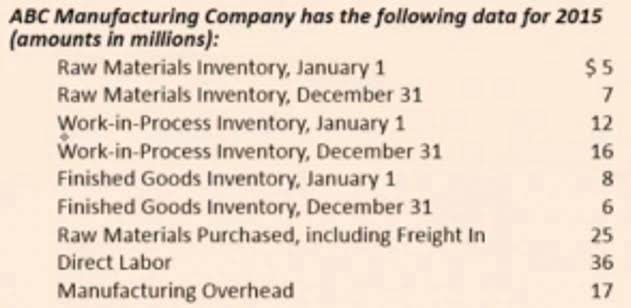Guide: How To Calculate Your Manufacturing Overhead
You can even set reminders for timesheets to make sure that everything runs smoothly. As we mentioned above you can track costs on the real-time dashboard and real-time portfolio dashboard, but you can also pull cost and budget data in downloadable reports with a keystroke. Get reports on project or portfolio status, project plan, tasks, timesheets and more. Manufacturing overhead should also be a key factor in determining the selling price of your products. This bookmark is an easily accessible vault of information regarding the working history of the whole company. Every clock in and clock out is saved with information about the quantity and number of shortages, raw material consumption, or deficiencies.
The assignment of overhead costs to jobs based on a predetermined overhead rate is called overhead applied9. Remember that overhead applied does not represent actual overhead costs incurred by the job—nor does it represent direct labor or direct material costs. Instead, overhead applied represents a portion of estimated overhead costs that is assigned to a particular job. So, if you wanted to determine the indirect costs for a week, you would total up your weekly indirect or overhead costs.
The total manufacturing overhead of $50,000 divided by 10,000 units produced is $5. So, for every unit the company makes, it’ll spend $5 on manufacturing overhead expenses on that unit. In order to know the manufacturing overhead cost to make one unit, divide the total manufacturing overhead by the number of units produced. Companies can use this formula to determine the total cost of producing a product, including direct and indirect costs. This information is essential for deciding product profitability and making informed decisions about pricing, production volumes, and cost-saving strategies.
These costs must be included in the stock valuation of finished goods and work in progress. Both COGS and the inventory value must be reported social networking sites for book lovers on the income statement and the balance sheet. This means 16% of your monthly revenue will go toward your company’s overhead costs.
- Every clock in and clock out is saved with information about the quantity and number of shortages, raw material consumption, or deficiencies.
- If you plan on using direct labor hours, you’ll need to calculate the total labor hours worked for the month.
- Manufacturing overhead, an indirect cost, can be classified into fixed, variable, and semi-variable overhead costs.
- Now, sometimes indirect costs are necessary for production but can’t be traced to a specific product.
You can use this formula to calculate manufacturing overhead, which should appear on your cost of goods income statement as well as any other relevant balance sheets. They usually include the cost of the property where the manufacturing is taking place and its depreciation, purchasing new machines, repair costs of new machines and other similar costs. Accountants calculate this cost by either the declining balance method or the straight line method. In the declining balance method, a constant rate of depreciation is applied to the asset’s book value every year.
Alternative Approach to Closing the Manufacturing Overhead Account
For instance, during months of heavy production, the bill goes up; during the off season, it goes down. That means maintenance people, janitors, cleaners, security guards, supervisors, quality control workers, and anyone else that helps keep the ball rolling. There are other notifications you can receive by email or in the tool to alert you about activity and task reminders. Our collaborative platform lets you share files and comment with everyone no matter where or when. There’s also workflow automation and task authorization to free up your workers to focus on what matters without jeopardizing quality.
In this case, for every product you manufacture, you allocate $25 in manufacturing overhead costs. All the items in the list above are related to the manufacturing function of the business. These costs exclude variable costs required to manufacture products, such as direct materials and direct labor. Once all indirect expenses are calculated, calculate your overhead rate percentage. Cost allocation is essential for establishing realistic figures for calculating the cost of each unit manufactured. The manufacturing overhead cost can be determined as the sum of the entire production process or on a per-unit basis.
Applied Manufacturing Overhead Formula
However, costs that are outside of the manufacturing facilities are not product costs and are not inventoriable. This forecast is called applied manufacturing overhead, a fixed overhead expense applied to a cost object like a product line or manufacturing process. Applied overhead usually differs from actual manufacturing overhead or the actual expenses incurred during production. Direct costs are costs directly tied to a product or service that a company produces.
Direct costs typically are direct labor, direct machine costs, or direct material costs—all expressed in dollar amounts. Each one of these is also known as an “activity driver” or “allocation measure.” The overhead rate is a cost added on to the direct costs of production in order to more accurately assess the profitability of each product. In more complicated cases, a combination of several cost drivers may be used to approximate overhead costs.
Variable overhead costs
Step 1 is the most important, so make sure to include all of your indirect costs. A common error is including obvious indirect costs, but leaving others out, resulting in an inaccurate overhead cost, and ultimately, an understated cost of goods sold. Therefore, to find how much manufacturing overhead a company has, it uses a manufacturing overhead formula that adds up all costs that do not link to a specific product. Determining the manufacturing overhead expenses can also help you create a budget for manufacturing overhead. If your manufacturing overhead rate is low, it means that the business is using its resources efficiently and effectively.
When you do this calculation and find that the manufacturing overhead rate is low, that means you’re running your business efficiently. The higher the percentage, the more likely you’re dealing with a lagging production process. To account for manufacturing overhead, companies typically use a predetermined overhead rate. To calculate this rate, divide the estimated total manufacturing overhead for a period by the estimated total units produced for the same period. Accurately calculating your company’s manufacturing overhead costs is important for budgeting.
Boeing provides products and services to customers in 150 countries and employs 165,000 people throughout the world. You should add these costs to the stock valuation of finished goods and work in progress. It also requires a continuous supply of electricity and factory resources to carry on its processes smoothly. Overhead costs are the ongoing costs paid to support the operations of a business, i.e. the necessary expenses to remain open and to “keep the lights on”. Therefore, the manufacturing overhead of Samsung for the year 2022 stood at W146.89 trillion.
In this article, we will discuss how to calculate manufacturing overhead and why it matters. We will not include Depreciation on Office Building as it did not occur indirectly for the production unit. This not only helps you run your business more effectively but is instrumental in making a budget. Knowing how much money you need to set aside for manufacturing overhead will help you create a more accurate budget. In our example scenario, for each dollar of sales generated by our retail company, $0.20 is allocated to overhead.
Physical costs
For example, if your company has $80,000 in monthly manufacturing overhead and $500,000 in monthly sales, the overhead percentage would be about 16%. Manufacturing units need factory supplies, electricity and power to sustain their operations. Emerging businesses need answers to many questions, from simple ways to calculate overhead costs to sustain themselves in the industry to find ways for value additions for their customers.
If you want to use direct labor hours for your business’s base calculation, you must calculate the total labor hours worked for the month. The overhead cost is recorded as the cost of goods sold (COGS) in the income statement. Let’s assume a company has overhead expenses that total $20 million for the period. The company has direct labor expenses totaling $5 million for the same period. Overhead expenses are generally fixed costs, meaning they’re incurred whether or not a factory produces a single item or a retail store sells a single product. Fixed costs would include building or office space rent, utilities, insurance, supplies, maintenance, and repair.
This means that for every dollar that you’re currently earning in sales, you’re spending $0.47 in expenses. We saved more than $1 million on our spend in the first year and just recently identified an opportunity to save about $10,000 every month on recurring expenses with Planergy. So, for every dollar Company B currently earns in sales, it is spending $0.47 in expenses. Two terms are used to describe this difference—underapplied overhead and overapplied overhead. Adam Hayes, Ph.D., CFA, is a financial writer with 15+ years Wall Street experience as a derivatives trader.
For calculating manufacturing overhead costs, you need to add all the indirect industrial costs brought about while manufacturing an item. Monthly depreciation expense must be included in overhead as in indirect cost. Only production-related equipment https://www.wave-accounting.net/ must be included in the indirect overhead cost. For example, if your monthly depreciation expense is $2,500, but only $1,500 is related to manufacturing-related equipment, you should only include $1,500 in your indirect costs for the month.




